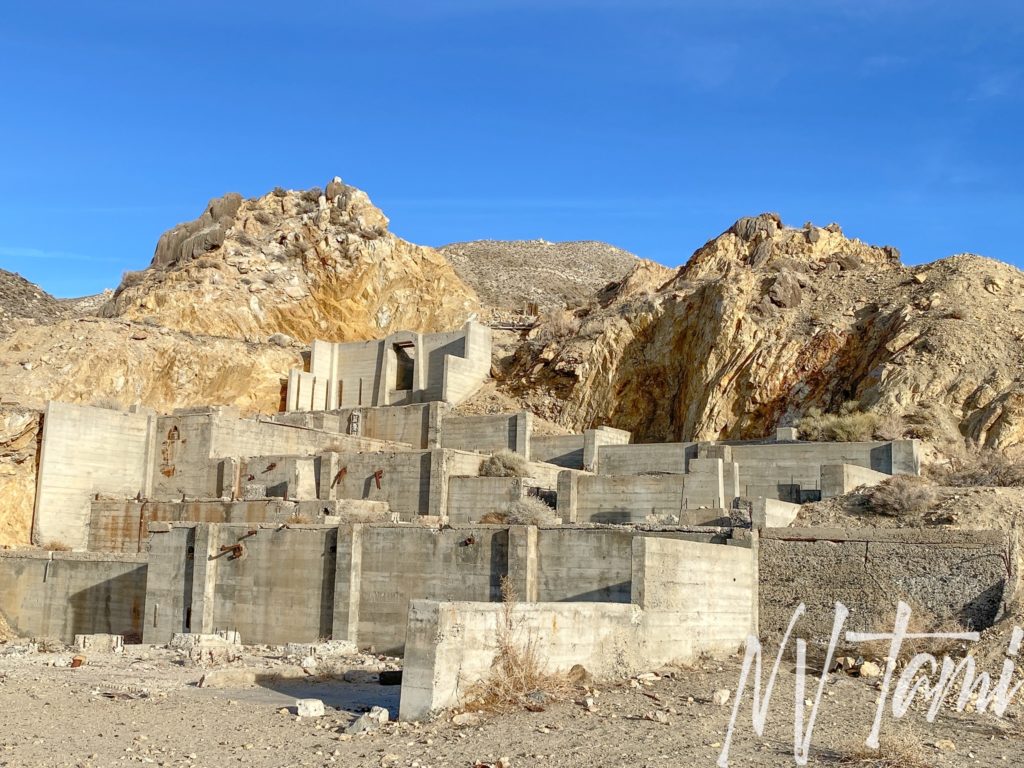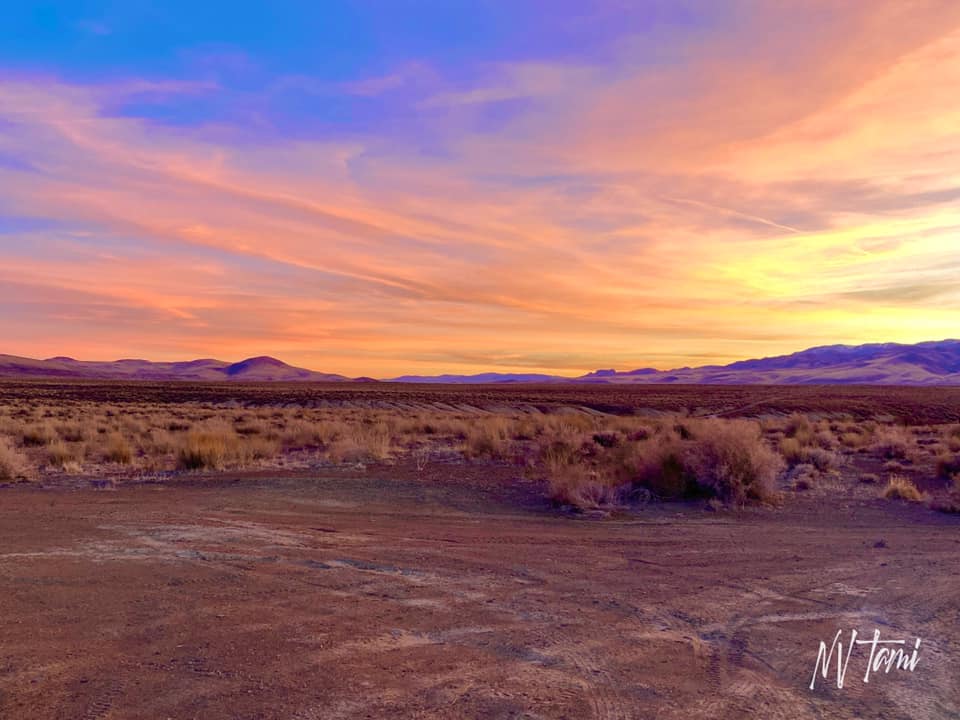
M.G.L. Mine and Mill was the last stop on a winter day I spent with a group of explorers in the Nightingale Range. Dave, our trail master for the day, led us from Nixon to Nightingale Mine, Alpine Mine, Lake Winnemucca, ending at M.G.L. mine. The day was long and challenging for me. We encountered steep inclines, slopes covered in mud, boulders, tight passages and shelf roads with huge drop offs.

Shelf Road to Alpine Mine
I was fairly new to off-roading and still learning the capabilities of Honey Badger, my Jeep Rubicon. I was by myself and without radio contact as I ran out that morning without my handheld. We drove several places I honestly never thought a vehicle would go. The most intimidating section was the road between M.G.L. Mill and Mine. It wasn’t a huge drop-off but a ninety-degree corner into what seemed like a strait drop down, ending in another ninety-degree corner. Watching the vehicle in front of me, using my rusty physics knowledge, I said a prayer and went through the obstacles. I hit the corner, straightened the Jeep to avoid rolling, tipped the Jeep down the slope and somehow made it through the last corner. I made it and consider the experience a replacement for a cardiac stress test.

M.G.L. mine is located in the Nightingale Mining District in the Nightingale Range. The district is in Pershing County on the north east boundary of Washoe County. The mountains and mining district were named for Alanson W. Nightingill, a Captain in the 1860s Pyramid Lake War. He became the first Controller of Nevada in 1864.

Tungsten was mined on the east side of the Nightingale Range by Joe Bean and Associates in 1917. Later that year, deposits were discovered on the west slope, above Lake Winnemucca. Ore was shipped to Toulon for processing, thirty miles south-east of the mine.

Toulon Mill
(Photo credit: Nevada Expeditions)
Between 1917 and 1915, C. R. Cowles and Associates worked the west slope mine, producing eighty-tons of ore. The mine consisted of adits and an open and a stope, a step-like excavation within the mine.

M.G.L. Mining acquired the property in 1941 and installed a floatation concentrator at the mouth of the canyon. Tungsten was a strategic metal in WWII and in short supply. Mines including M.G.L. ramped up production of tungsten to assist in the war effort. This lead to their greatest period of production between between 1942 and 1945. With the end of WWII, need for tungsten decrease and the mine closed.

Before the mine’s closure, it was explored with eighty-two diamond drill holes but significant additional ore bodies were not located. Lessees sporadically worked the mine, including reworking tailings from earlier operations, between 1952 until its closure in 1956.
Ruins
M.G.L Mine & Mill is split into two sections. The lower sections contains the concentration mill. The mine is in a narrow canyon east of the mill. The mine is connected to an ore bin with a ore cart rail and elevated chute.
Mill




Mine, Ore Bin and Chute












Visited: 1-16-2021
References
- Minedat: Photo gallery: Nightingale Mining District
- Forgotten Nevada: NIghtingale (Pershing County)
- Lincoln, Francis Church. Mining Districts and Mineral Resources of Nevada. Stanley Paher, 1982. Pages 211-212
- Nevada Expeditions: MGL Mine and Mill
- Paher, Stanley: Nevada Ghost Towns and Mining Camps. Stan Paher, 1970. Page 113.
- UNR Scholar Works: Guide to Exploration in the Sierra Nevada Tungsten Province
- USGS: Tungsten Deposits of the Nightingale District, Pershing County, Nevada
- Western Mining History: M.G.L. Mines
- Wikipedia: Nightingale Mountains
Leave a Reply